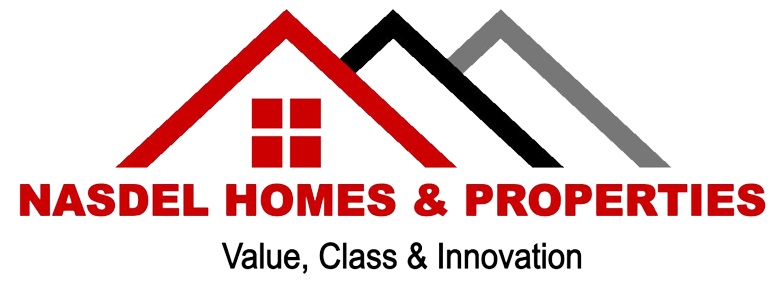
Liability accounts start with the most current (the ones you have to pay soonest) and move to the more long-term liabilities. We also like to list out rent accounts separately, one for each property or building we are renting. We keep separate accounts for each type of interest we are paying and title the accounts appropriately. This makes it easier to check that we have posted the correct amount of interest paid year-to-date on each loan. We have an internal convention of listing parent accounts in all caps, and subaccounts in lowercase.
- The IRS wants to see the profit levels for each product sold, and proof for the calculations.
- Use an expense-management software or create a robust system to group and track costs over the course of the year.
- This metric is essential for understanding the liquidity of the business and its ability to sustain operations without relying on external financing.
- Over time, they reveal hidden insights that lead to smarter business decisions.
- The uniqueness of the wine industry opens doors to a variety of tax reliefs that your business can benefit from.
- By tracking your investment and usage in these aspects of production, you form an accurate idea of the cost for the wines you sell.
Our mission is to see your small winery thrive.
If accounts receivable and payable are effectively handled, you’ll get paid on time, cash flow is stable, and relationships with your customers and suppliers are built. Financial statements are essential for assessing your profitability, liquidity, and overall financial stability. Reconciliation helps to detect and prevent errors, fraud, and gives an insight on your cash flow. For automating the process and winery accounting eliminating manual steps, choose accounting software with bank reconciliation functionality. The material appearing in this communication is for informational purposes only and should not be construed as advice of any kind, including legal, accounting, tax, or investment advice.

Accounting for Vineyards and Wineries Kindle Edition
The costs of grapes, bulk wine, glass, and other dry goods must be assigned to separate wines and tracked by SKU. While those costs are being accounted for, it’s also vital to track the movement of your inventory. This includes keeping tabs on what materials and labor went into creating specific vintages and blends. Makers of wine, including sparkling wine, over 1.3% alcohol by volume (ABV) must pay Wine Duty, based on a rate per litre, which varies according to ABV. If duty paid alcohol is being sold to another business, producers also need to be approved for the Alcohol Wholesaler Registration Scheme. This is all required in addition to the general accounting and record keeping needed to make sure that income and expenditure is recorded for the annual accounts and tax return for the business.
- Alternatively, the third party may be contracted to make the wine and return it to the grower who then sells that wine under their own label.
- Although all wineries produce wine, not all wineries raise the grapes used to produce that wine.
- Sometimes the accounts you need will be dictated by your business circumstances.
- The wineries prefer to use last in, first out costing to value their ending inventory, since it matches their latest costs against revenue, which should lower their taxable income.
- You will need to decide how much to spend on production overall, including how much to spend on grapes, glass, label, closures, and more.
Why Accounting Matters in the Wine Industry
- Sales data can help you to discover profitable products, drive the right sales funnels, and be in control with data-driven choices for your future.
- Cost for inventory may use several methods to best match the production processes, including the following.
- While it may seem simpler to write-off these expenses as you incur them, it skews the true financial results of the business.
- At 360 Accounting Pro Inc, we specialize in helping wine businesses manage finances efficiently, save on taxes, and grow sustainably.
- First, wines could be kept in storage for more than one year, so you have to allocate costs not just to several types of wine, but also to several vintages of each varietal.
The synergy between accounting, POS, and CRM systems fosters a data-driven approach to financial management, which is essential for the modern winery. In today’s digital age, leveraging technology in wine industry accounting is not just an option but a necessity. Advanced technological solutions can streamline accounting processes, improve accuracy, and provide real-time insights into financial performance. This section explores the pivotal role of technology in enhancing accounting practices for wineries.

Increased production often involves significant investments in equipment and facilities, affecting the cost per case until production volumes grow sufficiently. Allen Wine Group can help you determine which actions your business should take. Our experienced accounting experts provide tax planning advice to businesses in the wine industry. 360 Accounting Pro Inc. is a reliable and experienced accounting and bookkeeping service provider catering to allsizes of businesses and industries.
- Key components of wine accounting for a winery include cost of goods sold (COGS), inventory management, and production costs.
- We file annual tax returns for your business and support you with quarterly estimated payments.
- We are a team of humans who believe accounting is more than just checking boxes and filing receipts.
- GAAP and tax-basis financial recordkeeping, so it’s useful to discuss this with your CPA.
- All these costs must be considered when calculating your final price per bottle.
Hence, keeping a firm track of all the changes requires specialized accounting skills. From navigating regulations and dealing with the inventory to cost management, wineries must look out for all. The uniqueness of the wine industry opens doors to a variety of tax reliefs that your business can benefit from. Our specialist tax advisory team can provide tailored tax planning advice to help you effectively identify, claim and maximise reliefs. Inventory valuation is used to determine the value of your stock at any given time, which is important for making informed decisions about buying and selling inventory.
They have specialized skill sets that can implement systems and control processes to track inventory accurately. Knowing winery accounting which normal balance category or categories you fall into will help ensure that you track the correct numbers. That way, you can price your products correctly and avoid having a loss for your business. Wine accounting is an essential part of the wine industry, but it can often be daunting and confusing, especially for those new to the business.
IC-DISCs do not have employees or offices and are not taxed at the federal level; instead, they charge a sales commission from the exporting winery. This revenue is then distributed to the shareholders, who tend to be the same individuals or entities that own the exporter, as qualified dividends. Currently, qualified dividends are taxed at a lower rate than ordinary income, so the resulting tax bill can be significantly lower than if the export income was taxed at ordinary income rates (Ricioli). The vineyard origin indicates whether a particular appellation can be attached to the grapes produced in that region. To calculate COGS, periodically transfer the accumulated totals from these temporary ‘other expenses’ accounts on your P&L Accounts Payable Management to the appropriate inventory accounts on your balance sheet.

An outside entity can offer an unbiased perspective on missed costs and alternative ways to allocate the identified costs. The process of applying overhead costs should evolve over time as operations become more complex, and so too should the allocation methodology—without negatively impacting consistency. It’s also important that financial reporting disclosures provide transparency about inventory costing, methods, assumptions, and significant estimates.
